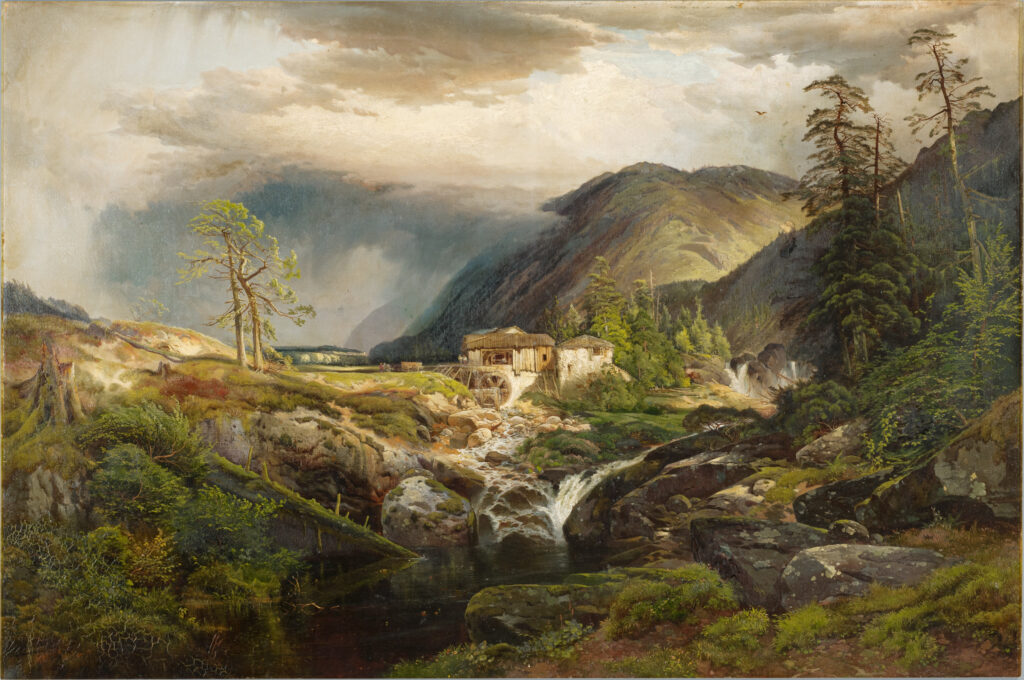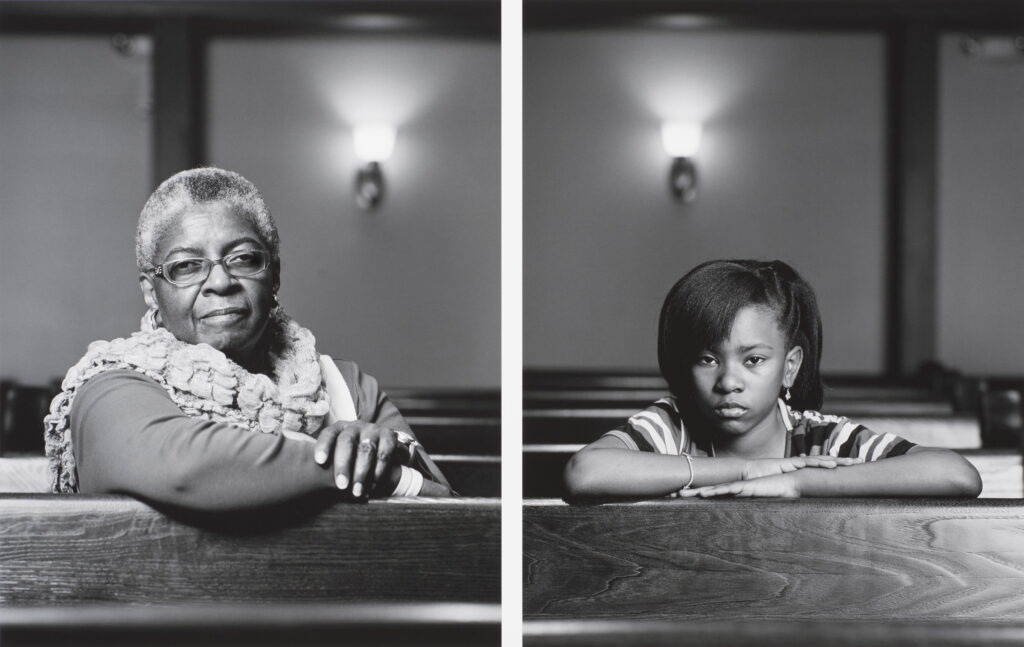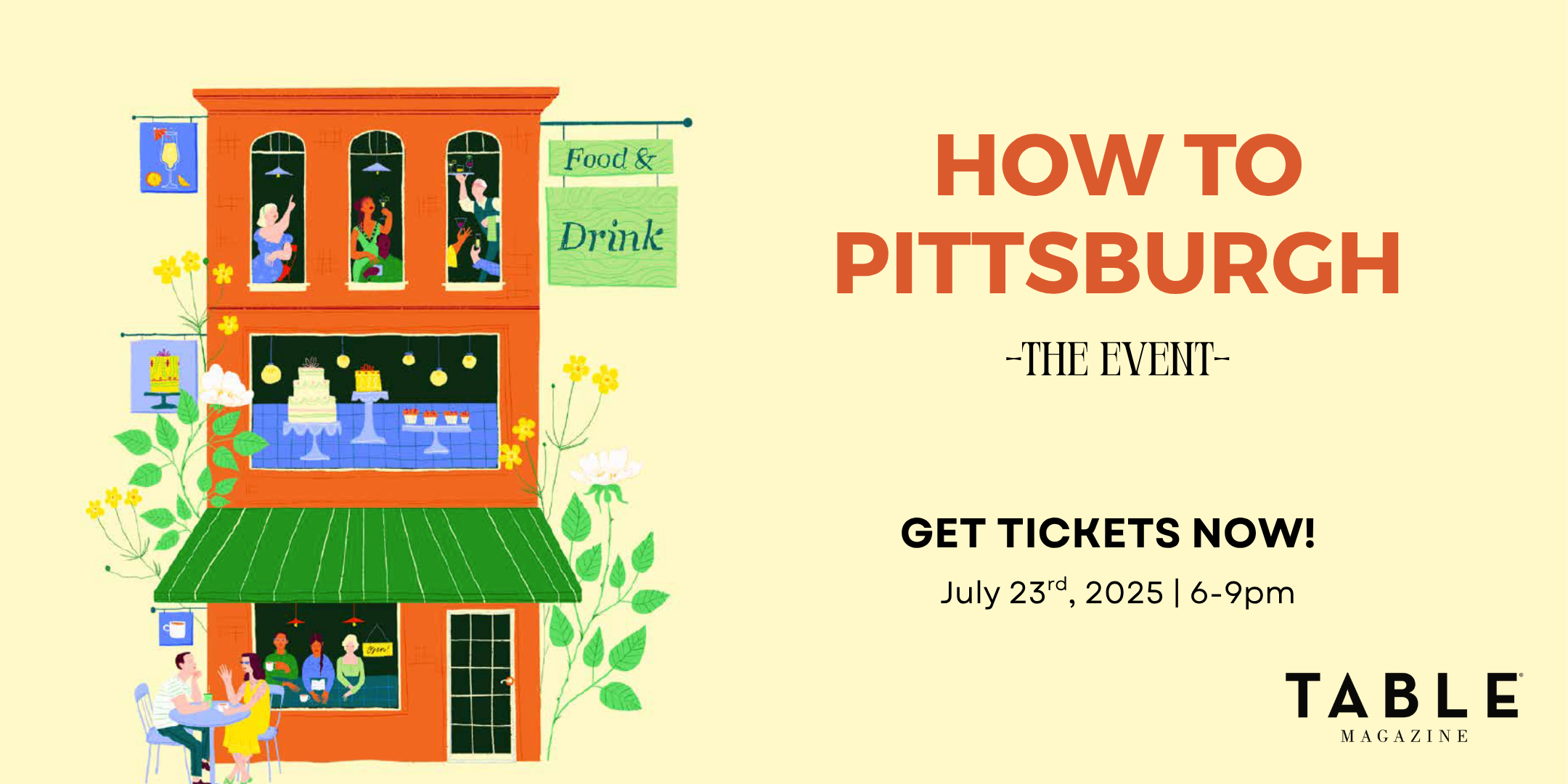In a presidential election year with many opinions and positions, tempers are certain to rise. A trip to the Carnegie Museum of Art (CMOA) can cool the fever and remind us that what brings us together as Americans is always stronger that what pushes us apart. Among the unifying factors we share: a veneration of the beauty of our country, and a reverence for what each and every American brings to our shared table. Two Carnegie Museum of Art curators start the conversation with works from the museum’s permanent collection.

Thomas Moran (American, 1837–1926)
Clearing in the Mountains, 1865
Oil on canvas
Heinz Family Fund, 2014.16
Akemi May, Associate Curator of Work on Paper
Thomas Moran’s painting of a sawmill in Pike County, PA was made shortly after a sketching tour of the region. It was sometime in July or August of 1865, mere months after the end of the Civil War. The isolation and scale of the manmade structure against the rugged wilderness was a standard theme in Hudson River School landscapes, reflecting both America’s rapid expansion in the mid-19th century and the sublime — a heightened sense of awe, astonishment, and sometimes fear of the expansiveness of the natural world. Given the context, the retreating storm and rays of light breaking through the clouds could symbolize hope for the new era after the war which ended six months prior.

Dawoud Bey (American, b. 1953)
Mary Parker and Caela Cowan, 2014
Inkjet print, 16 × 25 in. (40.6 × 63.5cm)
Carnegie Museum of Art, purchased with funds provided by James Armstrong, Elizabeth and Sean McDonald, and Alice Snyder, 2017.22.3
© Dawoud Bey. Courtesy Stephen Daiter Gallery, Chicago
Dan Leers, Curator of Photography
On September 15, 1963, members of the KKK bombed the 16th Street Church in Birmingham, AL, killing six Black children. In 2014, Chicago-based photographer Dawoud Bey made these photographs of a Birmingham-area girl the same age as one of those who was murdered with an adult who is the age that the girls would have been had they not been killed. The event was a flashpoint in the Civil Rights movement and inspired Bey to make this pair of portraits in the sanctuary of the Bethel Baptist Church, a key center for activism following the bombing.
Story and Photography Courtesy of Carnegie Museum of Art
Subscribe to TABLE Magazine‘s print edition.


